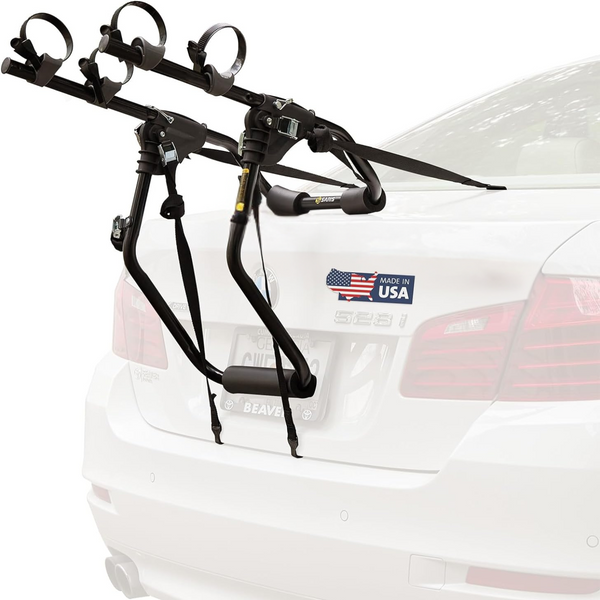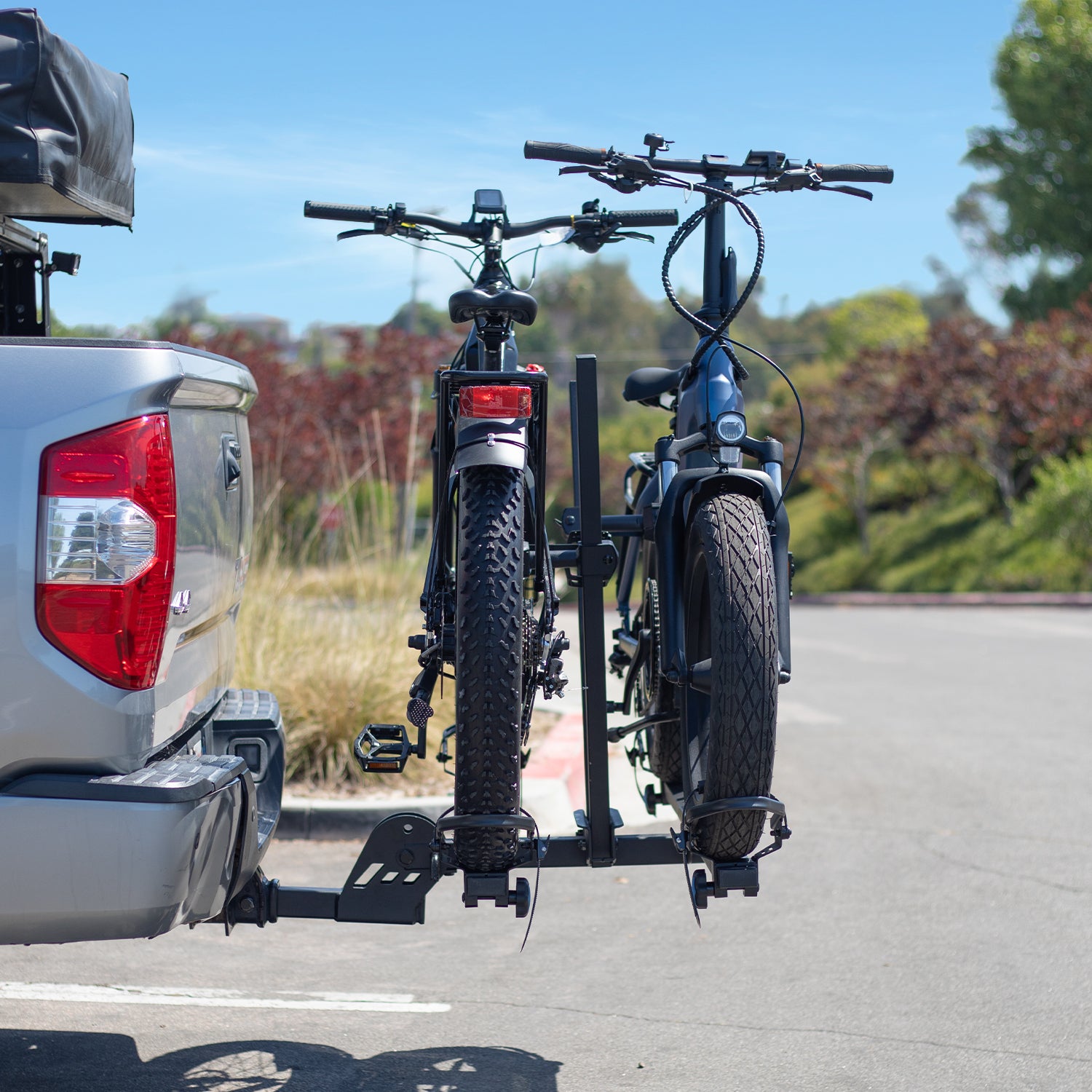E Bike Rack Installation Tips for Beginners
Wiki Article
Check Out the Different Kinds of Bike Shelf and Their Practical Applications for Cycling Lovers
The variety of bike Racks available today provides to the varied needs of cycling lovers. From freestanding to wall-mounted options, each layout provides special advantages for storage space and transportation. Mobile Racks likewise supply adaptability for those on the step. Nonetheless, choosing the excellent type needs mindful consideration of certain needs. Comprehending these factors can make a considerable distinction in both convenience and safety and security for bicyclists. What are the vital factors to consider when picking a bike shelf?Recognizing Bike Rack Enters
Different kinds of bike Racks accommodate the diverse needs of bicyclists. Among the most common are freestanding shelfs, often found in urban locations, which enable several bikes to be protected in a portable room. Wall-mounted Racks serve those with restricted floor area, offering an effective option for home storage space. Furthermore, portable bike shelfs, developed for simplicity of transportation, attract bikers that frequently take a trip.
Hitch-Mounted Bike Racks
Hitch-mounted bike Racks use a functional solution for transferring bicycles, yet comprehending their installment procedure is vital for effective usage. Users need to additionally think about the weight capacity of these Racks to assure safety and security and stability while taking a trip. Additionally, compatibility with various automobile kinds plays a significant duty in figuring out the ideal shelf for individual requirements.Installation Refine Summary
When picking a hitch-mounted bike shelf, recognizing the setup process is important for guaranteeing security and comfort. Initially, the user must validate compatibility between the car and the shelf's drawback receiver. Most Racks are designed for either 2-inch or 1.25-inch receivers. After choosing the ideal shelf, the setup begins with protecting the rack into the drawback receiver and tightening the hitch pin or bolt to avoid motion. Correct positioning is crucial to ascertain the rack does not obstruct tail lights or permit plates. As soon as mounted, it is recommended to examine for stability by applying small pressure to the shelf. Following the producer's directions will certainly assure an effective setup, advertising a secure cycling experience on the road.Weight Capacity Considerations

Compatibility With Vehicle Kind
Selecting the appropriate bike shelf includes validating compatibility with numerous vehicle types. Hitch-mounted bike Racks are designed to connect to the back drawback receiver of an automobile, making them appropriate for a variety of suvs, autos, and trucks. It is vital to inspect the drawback course and weight ability to verify an appropriate fit. A lot of hitch-mounted Racks work with 1.25-inch and 2-inch receivers, suiting lorries outfitted with proper hauling capacities. Furthermore, individuals should consider their car's height and layout, as some Racks might block back access or call for added clearance. Ultimately, understanding car specifications verifies that biking fanatics can safely move their bikes without jeopardizing security or functionality.Trunk-Mounted Bike Racks
Trunk-mounted bike Racks provide a functional solution for cyclists seeking an effective method to deliver their bikes. Understanding the installation process is necessary for excellent use, as improper setup can lead to security issues. In addition, thinking about the weight ability of these Racks guarantees that they can safely hold the bikes without threat of damage or failing throughout transportation.Installation Process Introduction
Numerous cycling lovers value the convenience of trunk-mounted bike Racks for their ease of use and versatility. The installment procedure usually starts with familiarizing and unboxing the rack oneself with its parts. Many Racks come with adjustable straps and hooks created to secure them to the vehicle's trunk or hatch. Users ought to confirm the shelf is positioned correctly, aligning it with the vehicle's shapes for stability. Complying with the manufacturer's guidelines, the bands are after that tightened safely, ensuring a tight fit. It is essential to inspect that the rack does not block the lorry's lights or certificate plate. Ultimately, confirming that all connections are protected before loading bikes is important for safe transport. Correct installment boosts both safety and security and effectiveness throughout biking journeys.Weight Capacity Considerations
When considering a bike shelf for delivering bikes, weight capacity is a crucial aspect that can not be neglected. Trunk-mounted bike Racks usually carry weight limitations that vary depending upon the design and layout. It is essential for customers to check these specifications to guarantee they do not exceed the suggested weight, as doing so can jeopardize both security and automobile stability. The majority of trunk-mounted Racks can sustain 1 or 2 bikes, with a combined weight capacity varying from 70 to 120 extra pounds. Bicyclists ought to also think about the weight of their bikes, particularly if they possess much heavier models like electrical bikes. Properly matching the shelf's weight capacity with the bikes' weights ensures a safe and safe transportation experience.Roof-Mounted Bike Racks
Roof-mounted bike Racks supply a streamlined remedy for delivering bikes, providing bicyclists with the benefit of making the most of cargo room. These Racks are designed to hold bikes firmly atop the lorry, allowing for simple access to the rear of the vehicle and stopping blockages to the license plate or tail lights. They are excellent for people who frequently travel with their bikes, as they can accommodate various bicycle styles and dimensions.Installation commonly entails affixing the rack to the lorry's bars, ensuring a stable and safe fit. Roof-mounted Racks are light-weight and frequently wind resistant, which can lead to improved fuel efficiency compared to various other here kinds of shelfs. Users must consider the height of their lorry when filling and unloading bikes, as well as prospective difficulties when getting in garages or low-clearance areas - Hitch Bike Rack. Overall, roof-mounted bike Racks provide a efficient and functional choice for passionate cyclists on the move
Wall-Mounted Bike Racks
Wall-mounted bike Racks offer a reliable option for bicyclists looking for to make the most of minimal area while securely saving their bicycles. These Racks are ideal for urban dwellers or those with little garages, as they elevate bikes off the ground and use vertical room. Made from sturdy materials, wall-mounted options can fit numerous bike types, consisting of hybrid, mountain, and roadway bikes.Setup is uncomplicated, allowing users to install them in garages, basements, or perhaps exterior spaces. Numerous layouts permit one or numerous bikes, making them versatile for specific or family members usage. Furthermore, some wall-mounted Racks featured incorporated locks or protection attributes to prevent theft, boosting satisfaction for bicyclists.
Portable Bike Racks
Mobile bike Racks provide cyclists a practical and flexible remedy for transferring their bicycles. These Racks are created for very easy setup and elimination, making them perfect for those who require to often switch over between vehicles or areas. Normally light-weight and compact, portable bike Racks can be conveniently kept in a trunk or garage, alleviating the burden of permanent installations.There are numerous types of portable bike shelfs, including hitch-mounted, trunk-mounted, and roof-mounted choices, each satisfying various car kinds and biker choices. Hitch-mounted Racks offer security and accessibility, while trunk-mounted Racks are typically more economical and functional. Roof-mounted Racks are great for taking full advantage of cargo room however may call for some training.
Choosing the Right Bike Shelf for Your Needs
Exactly how can one identify the very best bike shelf to fit their specific biking demands? Determining the appropriate bike shelf includes assessing several variables. Initially, one must take into consideration the sort of vehicle utilized for transport, as Racks are created for different installing systems, such as hitch, trunk, or roof. Next, the number of bikes to be brought is vital; some Racks accommodate just one, while others can hold multiple bikes effectively. In addition, figuring out the weight and frame design of the bikes is considerable, as certain Racks are better matched for much heavier or distinctly designed bikes. Designated usage ought to be taken into account; constant tourists might favor a much more portable alternative, while occasional customers may prioritize simplicity and simplicity of setup. By meticulously considering these factors to consider, people can select a bike rack that satisfies their needs and enhances their cycling experience.
Regularly Asked Inquiries
Can Bike Racks Accommodate Different Bike Sizes and Styles?
Bike Racks differ in layout, enabling holiday accommodation for different bike dimensions and styles. Some Racks feature flexible components, while others are particularly tailored for particular bikes, guaranteeing safe and secure storage space and simple ease of access no matter the bike's specs.How Do I Correctly Protect My Bike on a Shelf?
To correctly safeguard a bike on a shelf, one should ensure the frame and wheels are firmly attached utilizing locks or bands, inspecting for security and protecting against motion during transport to stay clear of damage.Are Bike Racks Easy to Set Up and Eliminate?
Bike Racks differ in setup complexity, however many are created for user-friendliness. Removable versions generally use straightforward arrangement and removal, while irreversible installments may call for devices and even more time, relying on the specific layout.
What Materials Are Bike Racks Commonly Made From?
Bike Racks are usually made from products such as plastic, light weight aluminum, and steel. E Bike Rack. Steel gives sturdiness and toughness, while aluminum uses lightweight mobility. Plastic alternatives are frequently designed for simplicity of usage and affordabilityDo Bike Racks Affect Fuel Efficiency When Driving?
When driving is substantial, the question of whether bike Racks impact gas effectiveness. Research studies indicate that bike Racks can enhance aerodynamic drag, possibly resulting in decreased gas effectiveness, particularly at higher rates or with additional weight.After selecting the suitable shelf, the installment begins with safeguarding the shelf into the drawback receiver and tightening the drawback pin or screw to stop movement. Roof-mounted Racks are typically wind resistant and lightweight, which can lead to boosted fuel effectiveness compared to other types of shelfs. Hitch-mounted Racks give stability and availability, while trunk-mounted Racks are usually more affordable and flexible. Next, the number of bikes to be carried is important; some Racks accommodate only one, while others can hold several bikes effectively. Bike Racks differ in style, allowing holiday accommodation for different bike dimensions and designs.
Report this wiki page